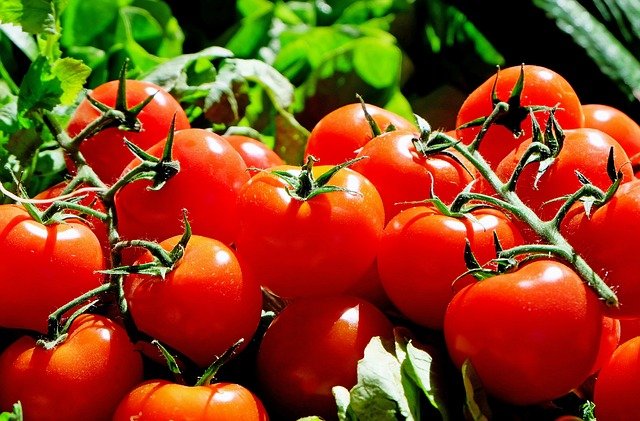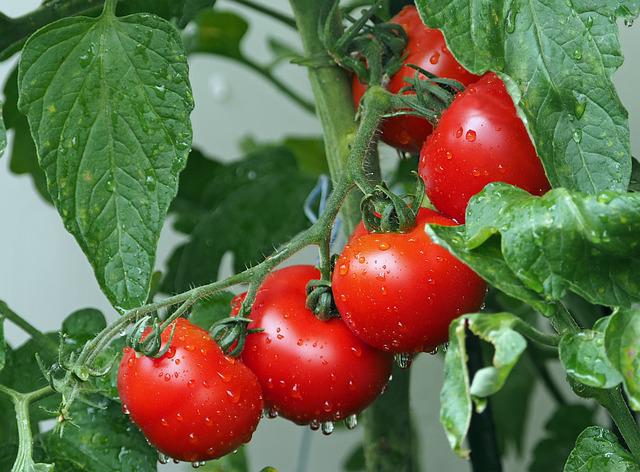Tomatoes are one of the most popular vegetables in the world. They are a good source of vitamins and minerals; you can use them in many dishes. Tomatoes are usually red but can also be yellow, green, or purple. Growing tomatoes is not difficult, but there are a few things you need to know before you start. So, when to harvest tomatoes? I will answer that in the next section.
Tomatoes are a good source of fiber and antioxidants. They also contain lycopene, a substance that can help protect against some types of cancer. Tomatoes can be eaten raw, cooked, or in sauce form.
You can grow tomatoes in your garden or on your patio or balcony. If you live in an apartment, you can grow tomatoes in a sunny window. You only need a pot, some soil, and a tomato plant. When choosing a tomato plant, look for one that is healthy and has strong stems.
When To Harvest Tomatoes?
Though often considered a vegetable, tomatoes are a fruit. A nightshade family member, tomatoes are tropical plants that you first domesticated in South America. Unlike most fruits, tomatoes continue to ripen after they are picked. This makes them challenging to grow, as farmers must strike a delicate balance between picking the fruit too early and too late.

If picked too early, tomatoes will be sour and lack flavor. If picked too late, they may split or rot. So when is the best time to harvest tomatoes? The answer depends on the variety of tomatoes being grown and the desired level of ripeness. For example, certain varieties (such as beefsteak tomatoes) are best when allowed to ripen on the vine fully. Others (such as cherry tomatoes) can be picked while still slightly green and will continue to ripen off the vine.
In general, however, most tomatoes should be picked with a deep red color when they are firm but not hard. Once picked, you can store tomatoes at room temperature or in the fridge. However, they should not be stored in direct sunlight, which can cause them to lose flavor. With proper care, freshly picked tomatoes can last for several days or even weeks.
How To Harvest Tomato Fruit?
Tomatoes are a warm-season crop usually planted after the last frost in late spring. They require at least six hours of direct sunlight daily and well-drained, nutrient-rich soil. When watering, avoid getting water on the leaves to prevent diseases. Fertilize your plants every two weeks with a water-soluble fertilizer.
Pinch off the suckers in the joints between the main stem and the side branches. This will help your plant to focus its energy on producing fruit rather than foliage. When the fruits are about the size of a golf ball, you can begin picking them. To avoid damaging the plant, use a sharp knife or pruning shears to cut the stem above the fruit.
Continue to harvest your fruits as they ripen. You can tell if a fruit is ripe if it comes off the stem easily and has a deep red color. Once picked, you can store tomatoes at room temperature or in the fridge. However, they should not be stored in direct sunlight, which can cause them to lose flavor. With proper care, freshly picked tomatoes can last for several days or even weeks.
Harvesting tomatoes is one of the most exciting parts of growing them! For the best flavor, wait until they are fully ripe on the vine. The skin should be deep red or pink, and the flesh should yield to gentle pressure. To harvest, gently twist the fruit from the vine, careful not to damage the plant. Once picked, you can store tomatoes at room temperature out of direct sunlight.
How Do We Protect Tomatoes From Pests And Diseases?
One of the most important aspects of gardening is protecting your plants from pests and diseases. This is especially true for tomatoes, as they are susceptible to many problems. However, there are a few simple steps that you can take to keep your tomatoes healthy and free from pests and diseases.
One of the most important things you can do is choose the right tomatoes for your climate. Some varieties are more resistant to pests and diseases than others, so choosing one that will be well-suited to your area is important. In addition, you should make sure to plant your tomatoes in well-drained soil. Both of these factors will help to reduce the risk of problems.
It is also important to water your tomatoes regularly. Tomatoes that are allowed to dry out are more likely to be attacked by pests and diseases. However, you should avoid overwatering, which can lead to problems. Instead, water your tomatoes deeply but less frequently, providing enough moisture to keep the roots moist but not wet.
Finally, inspecting your tomatoes regularly for signs of pests or diseases is important. Early detection is crucial for preventing serious problems. If you do find any problems, you should take steps to address them immediately. This may involve removing affected leaves or fruits, treating the plant with insecticide, or taking other steps as necessary. Following these simple tips, you can keep your tomatoes healthy and free from pests and diseases.

How To Store Tomatoes After Harvesting?
After harvesting your tomatoes, you will want to store them in a way that preserves their flavor and freshness. The first step is to wash the tomatoes thoroughly, then dry them with a clean towel. Next, remove the stem and any bruised or damaged areas. Once the tomatoes are prepared, you can store them in several different ways.
One option is to place them in a single layer on a baking sheet and put them in the freezer. Once frozen, you can transfer the tomatoes to a freezer bag or storage container. Another storage option is to place the whole tomatoes in a jar or container filled with olive oil. This will help to preserve their flavor and prevent them from drying out.
You can also store tomatoes in the refrigerator by placing them in a covered container or plastic bag. Just be sure to use them within a week or so for the best flavor and quality. With proper storage, your homegrown tomatoes can enjoy a long shelf life.
Wrapping Up
Tomatoes are a delicious and nutritious addition to any garden. By following these simple tips, you can grow healthy and flavorful tomatoes that will provide you with plenty of enjoyment all season long. So get out there and start growing!
